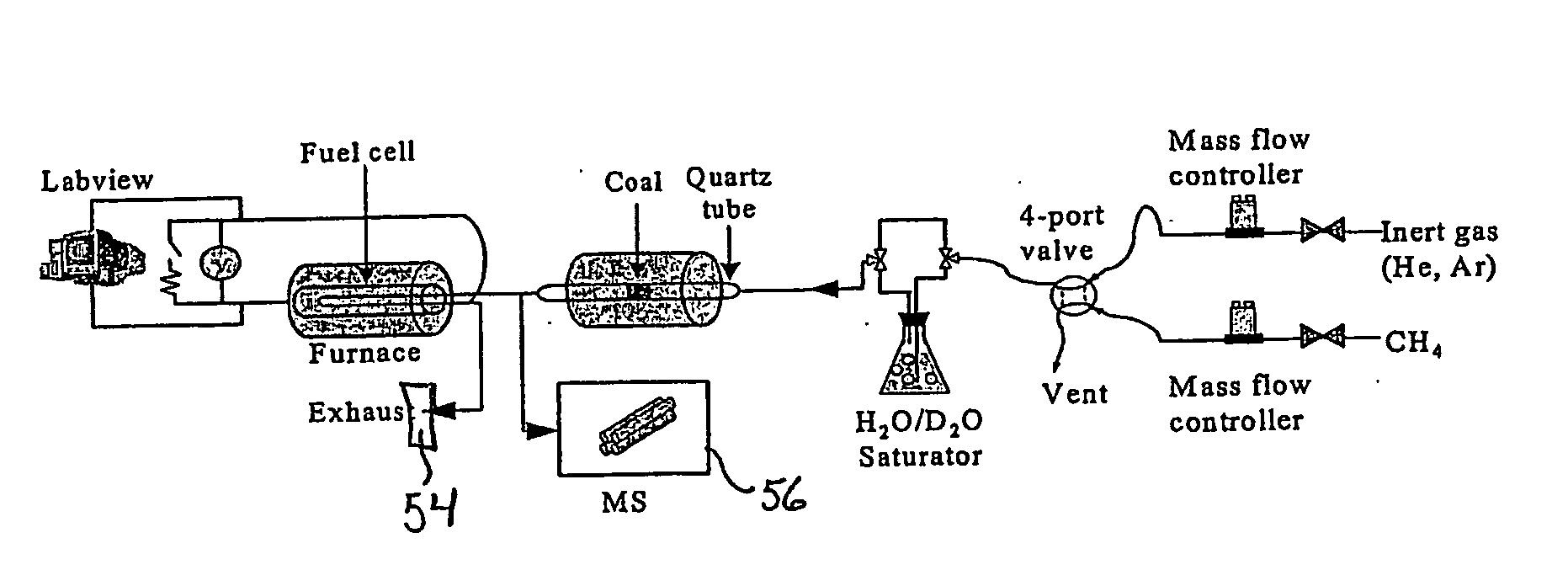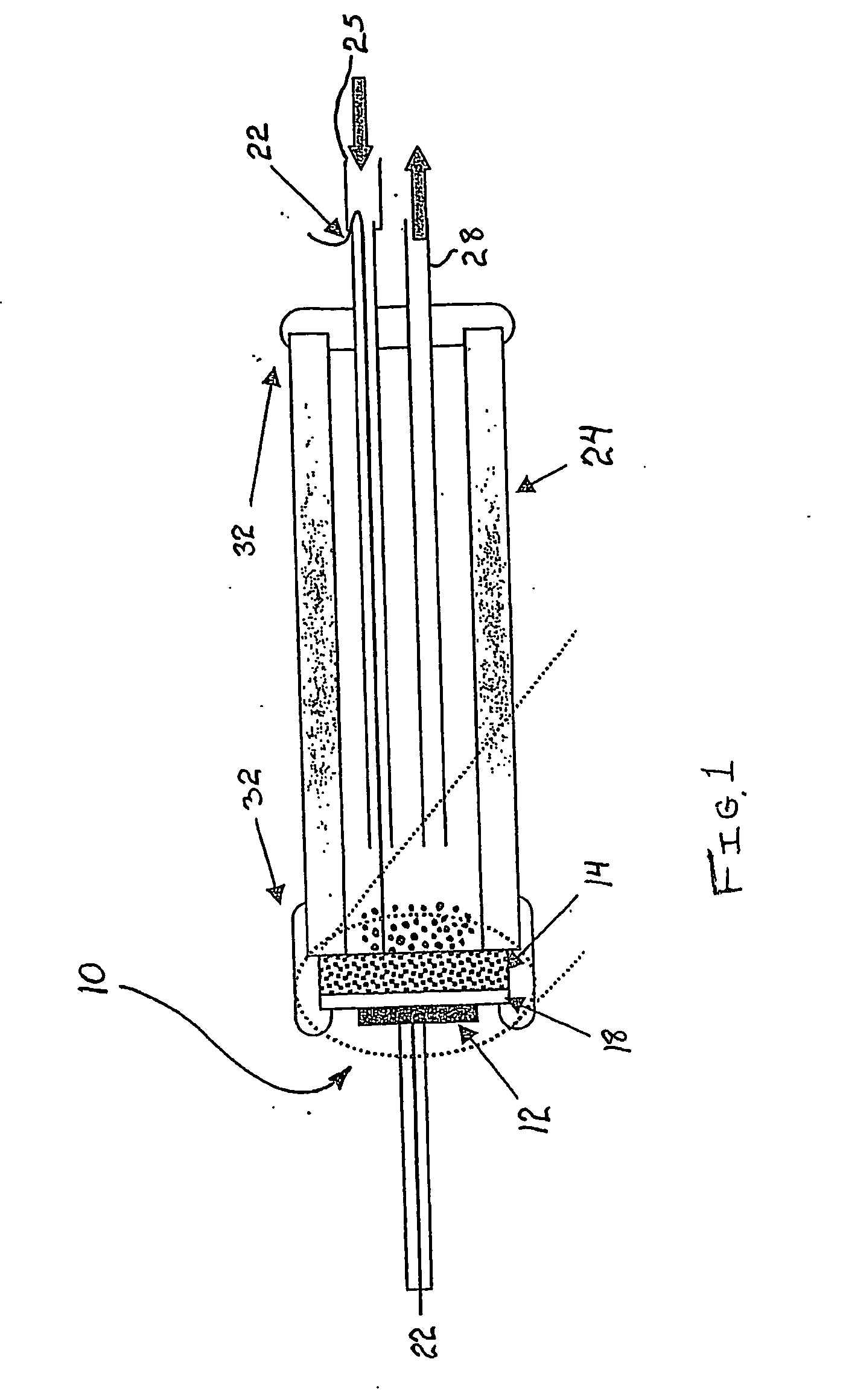Carbon-Based Fuel Cell
a fuel cell and carbon-based technology, applied in the direction of cell components, final product manufacturing, sustainable manufacturing/processing, etc., can solve the problems of reducing the production efficiency of oxygen ions, and reducing the production efficiency of ions, etc., to achieve the effect of promoting the production of oxygen ions
- Summary
- Abstract
- Description
- Claims
- Application Information
AI Technical Summary
Benefits of technology
Problems solved by technology
Method used
Image
Examples
example 1
[0048] An experimental assembly including the fuel cell 10 of the present invention is shown in FIG. 3. The fuel cell 10 consists of a dense YSZ disc (from Tosoh Corp.) which is coated with thin layers of anode and cathode catalyst materials that form the electrodes 12, 14. Detailed steps involved in catalyst preparation and fuel cell 10 construction are explained for EXAMPLE 2.
[0049] Both current and voltage output data from the fuel cell 10 were acquired by a PC 50 with an interface and Labview™ software. The gaseous exhaust product was analyzed by a SRI 8610C gas chromatograph 54 and a Pfeiffer QMS 200 mass spectrometer 56. The analysis of gaseous products, such as CO and CO2, allows determination of the fuel conversion efficiency and byproduct formation.
[0050] Referring once again to FIG. 2, the performance (I-V curves) of the fuel cell 10 with the use of pure CH4 and Ohio No. 5 coal (Table 1) as fuels is shown. Using the coal as the solid-state organic fuel, the coal was load...
example 2
Experimental Design
[0057] YSZ disks of 1 mm thickness were purchased from Tosoh Inc. as the solid-oxide electrolyte 18. Material to form the anode 14 and electrochemical oxidation catalyst combination was prepared by impregnation of YSZ fibers (provided by Zircar) and YSZ powder (provided by Tosoh) in a 7:3 ratio with Ni(NO3)2 and NH4ReO4. The nominal weight percentage of the Ni and Re on the anode material is 5 wt % (wt % represents a weight percentage) and 2 wt %, respectively. The anode / electrochemical oxidation catalyst material was pasted on a surface of the YSZ disc (1000 microns) using glycerine and calcined at 1000° C. for 4 hours. This procedure was repeated two times for making a thin layer to form the anode 14.
[0058] The first-electrode material was prepared by mixing Lanthanum Strontium Manganese Oxide (LSM-20, NexTech Materials) and YSZ powder in 1:1 ratio. The first-electrode material was pasted on the YSZ disc to form the cathode 12 using glycerine and calcined at 9...
PUM
 Login to View More
Login to View More Abstract
Description
Claims
Application Information
 Login to View More
Login to View More - R&D
- Intellectual Property
- Life Sciences
- Materials
- Tech Scout
- Unparalleled Data Quality
- Higher Quality Content
- 60% Fewer Hallucinations
Browse by: Latest US Patents, China's latest patents, Technical Efficacy Thesaurus, Application Domain, Technology Topic, Popular Technical Reports.
© 2025 PatSnap. All rights reserved.Legal|Privacy policy|Modern Slavery Act Transparency Statement|Sitemap|About US| Contact US: help@patsnap.com



